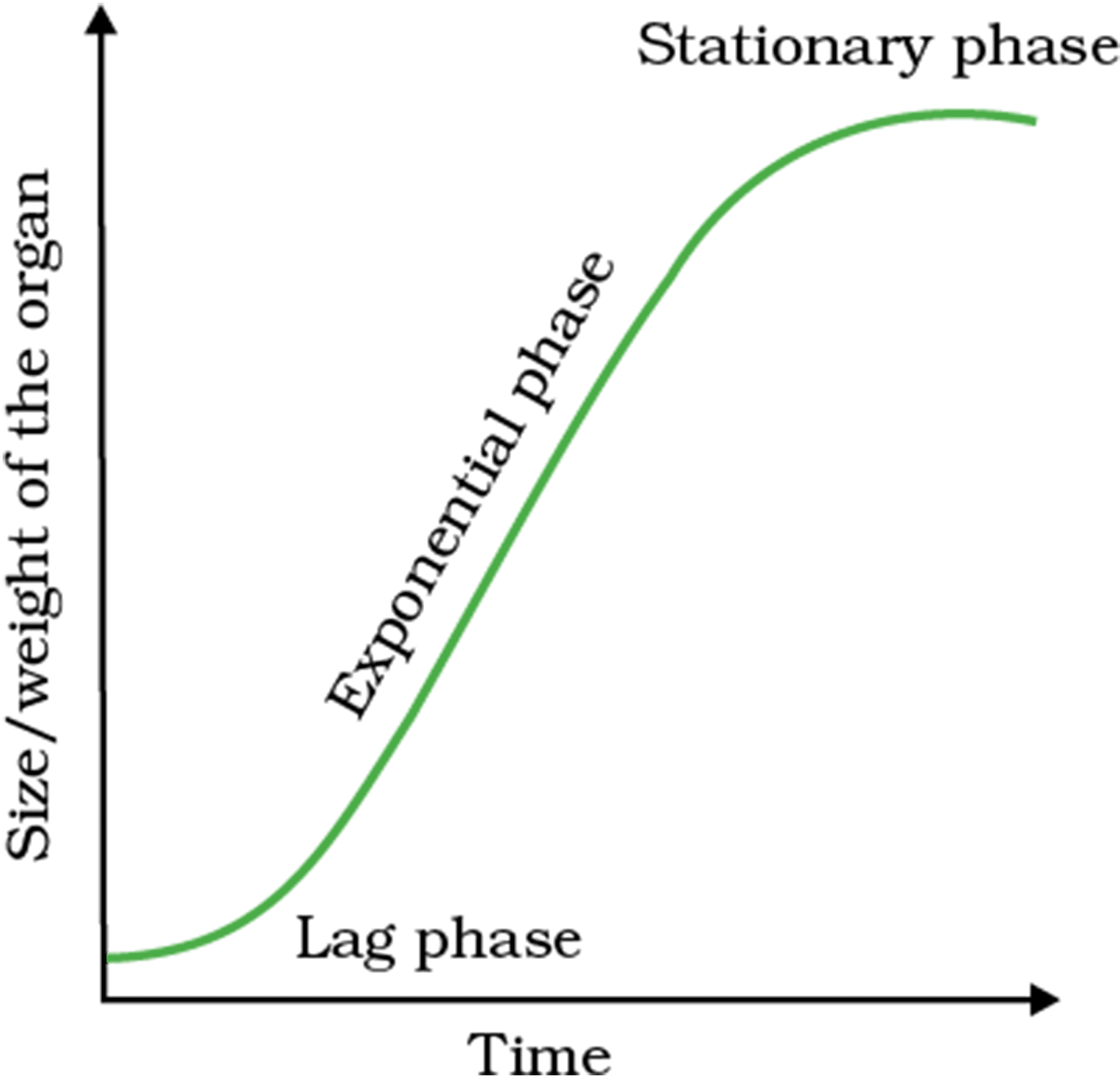Plant Growth and Development Class 11 important questions with answers PDF download
FAQs on CBSE Important Questions for Class 11 Biology Plant Growth and Development - 2025-26
1. What is the definition of growth in plants, as per CBSE Class 11 Important Questions?
Growth in plants is defined as a permanent and irreversible increase in the size, volume, or cell number of an organism or any of its parts. This process can be measured by parameters such as length, area, volume, fresh weight, or dry weight, as covered in Class 11 Biology Chapter 13.
2. Why is it insufficient to use only one parameter to measure plant growth throughout its life cycle?
Plant growth involves multiple attributes such as cell number, size, length, area, fresh weight, and dry weight. Using only one parameter may fail to capture growth at different stages or in various tissues, so multiple parameters are necessary for an accurate assessment, as emphasized in the CBSE 2025–26 syllabus.
3. What are the major phases of plant growth according to Class 11 Important Questions, and how can they be identified?
The major phases of plant growth are:
- Meristematic phase: Rapid cell division in the apical and root tip regions.
- Elongation phase: Newly formed cells increase in size, mainly found behind meristematic zones.
- Maturation phase: Cells attain maximum size and start differentiating for specific functions.
4. How does the sigmoid growth curve illustrate the overall pattern of plant growth?
The sigmoid growth curve represents three key stages: lag (slow initial growth), log/exponential (rapid growth), and stationary phase (growth rate plateaus). This S-shaped graph models plant growth realistically, providing a standard pattern referred to in CBSE Class 11 important questions.
5. List and briefly describe the five main types of natural plant growth regulators found in Class 11 Biology Chapter 13 Important Questions.
The five main natural plant growth regulators are:
- Auxins: Promote cell elongation, root initiation, and regulate apical dominance.
- Gibberellins: Stimulate stem elongation, seed germination, and flowering.
- Cytokinins: Promote cell division, delay leaf senescence, and stimulate shoot formation.
- Ethylene: Induces fruit ripening and leaf/fruit abscission.
- Abscisic Acid (ABA): Acts as a stress hormone and induces dormancy.
6. Why is Abscisic Acid (ABA) referred to as the stress hormone in plants?
Abscisic Acid (ABA) is called the stress hormone because it helps plants survive adverse conditions by closing stomata to reduce water loss, inducing dormancy, and promoting desiccation resistance in seeds, as highlighted in CBSE important questions for 2025–26.
7. What is photoperiodism, and why is it significant in plant development as discussed in Class 11 important questions?
Photoperiodism is a plant's response to the relative lengths of day and night, influencing processes such as flowering. It is significant because understanding photoperiodic responses helps optimize crop cycles and improve yield, making it a frequent exam topic and a fundamental CBSE concept.
8. How does vernalization affect flowering in plants according to CBSE Class 11 Plant Growth and Development?
Vernalization is the induction of a plant's flowering process by exposure to prolonged cold temperatures. It ensures plants flower at the optimal time in the season by delaying reproductive development until after adequate vegetative growth, which is a common FUQ in important questions.
9. Both growth and differentiation in higher plants are said to be "open". What does this mean?
"Open growth and differentiation" mean that higher plants can continuously produce new cells and tissues throughout their lifetime thanks to meristems. There is no fixed limit to the number of cells produced or their types; both processes continue as long as conditions permit, a concept frequently tested in Board exams.
10. Why does a defoliated plant not respond to photoperiodic cycles, as per the Class 11 Biology syllabus?
A defoliated plant fails to respond to photoperiodic cycles because its leaves are the primary sites for perceiving day/night length. Without leaves, the plant cannot detect the photoperiod, thus no photoperiod-induced responses (like flowering) can occur.
11. What is meant by "arithmetic" and "geometric" growth in plants? Differentiate between the two with examples.
Arithmetic growth involves a constant rate of cell division resulting in a linear increase (e.g., root elongation). Geometric growth involves exponential cell division, producing a rapid, S-shaped growth curve (e.g., early seedling growth). Both terms regularly appear in Class 11 important questions.
12. How are absolute growth rate and relative growth rate calculated in plant biology as per CBSE guidelines?
Absolute growth rate is the total increase in size or biomass per unit time, while relative growth rate is the increase relative to the initial size per unit time. Both provide distinct insights and their calculation methods are crucial HOTS areas in exam questions.
13. Explain the agricultural significance of auxins, mentioning at least two practical uses mentioned in Class 11 important questions.
Auxins are widely used in agriculture for:
- Inducing rooting in cuttings for plant propagation.
- Weed control (using synthetic auxins like 2,4-D to eliminate dicot weeds).
- Preventing fruit and leaf abscission, thus reducing crop losses.
14. What conceptual pitfalls or misconceptions might students face regarding the phases of plant growth?
Students often confuse meristematic activity with overall growth or fail to distinguish between elongation and maturation. Another common misconception is assuming that all plant cells continue dividing indefinitely, whereas differentiation actually limits this capacity, a nuance often targeted by HOTS questions.
15. If gibberellin ($\mathrm{GA}_3$) is applied to rice seedlings, what observable effect does it create, as frequently asked in boards?
Application of gibberellin ($\mathrm{GA}_3$) to rice seedlings results in enhanced internode elongation, making the plants taller. This is used both as a practical example and a conceptual question in CBSE important questions for Class 11 Biology.


























